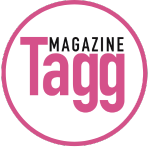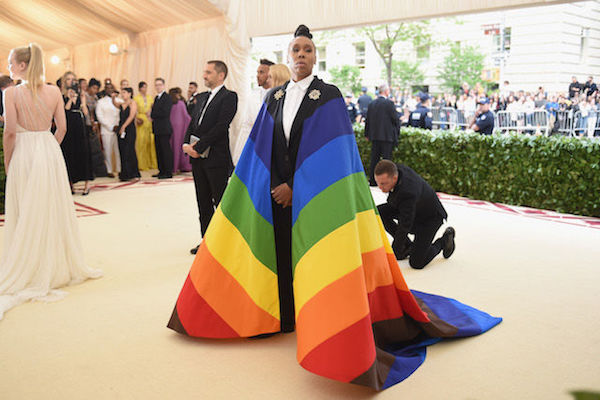Can you even call it the red carpet anymore without getting a queer eyeful of Jonathan Van Ness in a see-through mesh top? More recently, queer fashion has become unapologetically loud and proud on the red carpet from Billy Porter’s velvet tuxedo gown to Lena Waithe’s rainbow cape. Fortunately today we can appreciate the red carpet as an open space for glorifying gender fluid fashion, but it wasn’t always rainbows and butterflies for gay apparel in Hollywood. It took time for gay fashion to even be recognized as stylish art worth photographing for the masses.
As we approach the end of 2020, we enter even further into another decade of promising gay apparel that’s bound to bring even more gender-bending rules than the last century. In the meantime, here’s a quick throwback on how iconic gay celebrities and allies transformed the red carpet into queer fashion’s catwalk throughout the decades.
How the Red Carpet Turned Queer in 100 Years:
1930s: Despite the Great Depression’s rough economy, the film industry still survived producing old Hollywood stars, including Marlene Dietrich, John Wayne, Clark Gable and Jean Harlow. Among them, Dietrich was best known for her androgynous influences in gay apparel, especially for making the tuxedo suit unisex-friendly. Additionally, she was one the first to use tape to lift her temples like a mini facelift – a popular drag makeup hack still used today.
1940s: Gay androgynous influences were only solidified further in the forties, especially by starlet Katharine Hepburn. Hepburn was notorious for her strong-willed, independent persona which was translated through her gender-bending style choice to wear “masculine” pants, on and off set. It’s safe to say the powerhouse femme suit wouldn’t exist without trouser advocates like Hepburn, pushing today’s gay clothing brands to develop styles outside the norm.
1950s: Some of the most revered divas in LGBTQ culture rose to fame, such as Marilyn Monroe and Elizabeth Taylor. With the rise of sex symbols, naturally celebrities on the red carpet began to push boundaries by wearing tighter, lower cut dresses paired with luxury fur stoles (a silhouette loosely similar to feather boas). Despite slight changes in feminine dress, formal men’s fashion was still tied to classic black and white tuxedo suits.
1960s: A decade well remembered for the Stonewall Riots, the late sixties sparked real change for both the LGBTQ community and red carpet fashion. Julie Christie was among the few actresses who ditched the traditional Oscar gown for a metallic gold jumpsuit. A couple years later, Barbara Streisand pushed boundaries in a sheer mesh shirt with matching trousers at the 1969 Oscars.
1970s: Red carpet fashion only got brilliantly weirder and wilder in the seventies lending a nod to gay fashion’s “anything goes” ideology. Finally celebrities weren’t shy to sport vivid colors and bold patterns, like Jack Nicholson’s navy velvet suit and Isaac Hayes’s fur-trimmed suit jacket. However, the most gender-bending moment goes to Diane Keaton’s stylish menswear-inspired outfit; a straight-fit blazer jacket layered over a white button-down shirt and maxi skirt.
1980s: Colorful trends continued to reign supreme in the eighties. Male celebs broke away from the classic tuxedo suit by experimenting with trendy menswear that leaned even more androgynous like sparkly blazers. People began taking style inspiration from gay clothing icons like Michael Jackson, Prince, David Bowie and Boy George, including their wild men’s makeup looks.
1990s: Considering Ellen Degeneres coming out on air, this opened the door for even more celebrities to embrace flashier clothing styles whether that be at a movie premiere or in a music video. As trends began to relax, celebrities weren’t afraid to show up in casual clothing with grunge and hip-hop influences.
2000s: Pop culture began to embrace queer fashion and culture more than ever with popular entertainment, such as The L Word, Will & Grace, and Queer Eye. David Beckham’s rise to fame broke former stereotypes as men began wearing tighter fit shirts and jeans on the red carpet. You could even begin to find LGBTQ stores that sold metrosexual fashion by top clothing brands.
2010s: You could say this was queer culture’s big break as some of the top gay clothing brands like Differio began changing the online menswear space. Nothing was off limits for gay fashion icons, such as Janelle Monae, Billy Porter, Lil Nas X and Lena Waithe. Queer fashion runs rampant on the runway and red carpet as even the Met Gala explored the “camp” theme that’s pertinent to the queer community.

